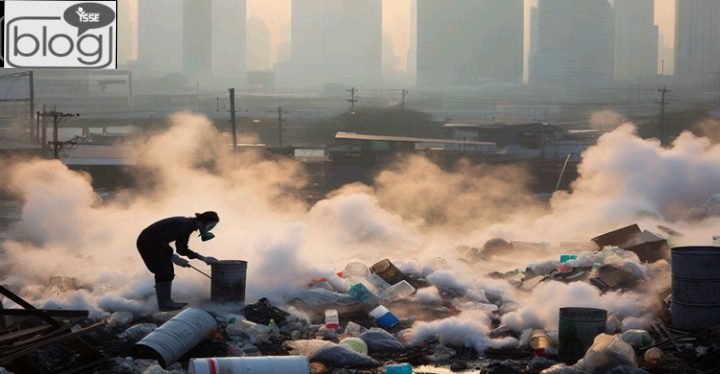Asia, home to a significant portion of the world’s population, is grappling with the detrimental effects of pollution. Rapid industrialization, urbanization, and population growth have contributed to soaring pollution levels, compromising both the environment and public health. Among the affected cities, Dhaka, the capital of Bangladesh, serves as a stark example of the magnitude of this crisis.
Mapping Overview
The WHO estimates that 92% of the world’s population breathes polluted air. This causes more than 7 million premature deaths in a single calendar year. Asia was home to 22 of the most polluted cities in 2021 where Dhaka rated as the worst. The average PM2.5 concentration in the city is more than 100 g/m3 which is four times higher than WHO’s recommendation. Over 80% of the ocean’s plastic waste comes from Asia which is the region with the most contaminated waterways. The average PM2.5 concentration in urban areas of Asia is 58.1 g/m3. It is also more than double of WHO’s recommendation. With over 80% of wastewater released untreated or just partially cleansed, ecosystems and public health are at risk through soil and water pollution in the area.
Exposure to Danger
Of all the world’s major cities, Dhaka has some of the worst air quality. Emissions from autos, companies, and brick kilns contribute significantly to the air’s high levels of particulate matter, SO2, and NO2… More than 10,000 new cars are put on the road each month. Industrial garbage and waste products from the city’s uncontrolled dumping are discharged into the Buriganga, Turag, and Shitalakhya rivers. Lead, chromium, and other heavy metals are illegally dumped into waterways by the tanning and textile dyeing industries. As a result of industrial pollutants, heavy metals are slowly building up in the soil in and around Dhaka. If the polluted soil is spread to land for agriculture then dangers will arise sooner. As of 2018, Dhaka was generating around 5,000 metric tons of plastic waste per day. Much of it ends up clogging drains or polluting low-income waterways during floods. Improper handling of electronic waste is contaminating soils and groundwater with lead, arsenic, and chemicals. Just 30% is said to be recycled.
Impacts of Pollution
The Ecosystem of our environment and human health both are negatively impacted by pollution. Particulate matter (PM2.5) as well as pollutants like nitrogen dioxide (NO2) and sulfur dioxide (SO2) are associated with respiratory diseases and cardiovascular problems. Water contamination can pollute sources of drinking water and lead to waterborne diseases. Biodiversity and aquatic creatures are harmed by soil contamination. Health problems caused by pollutants reduce worker efficiency and raise absence rates. Stress, insomnia, and a lower quality of life are all consequences of noise pollution. Due to developmental delays due to early exposure to pollution, children are particularly vulnerable.
Modern Ways to Protect the Environment
Technology can play a crucial role in reducing pollution. Electric vehicles and renewable energy sources are effective in reducing air pollution from non-renewable-powered vehicles and power plants. Public education through campaigns and programs is important for raising awareness and promoting individual actions to minimize environmental impact. Countries like China, India, Indonesia, the Philippines, etc. are taking significant steps to address pollution challenges. China has invested billions in renewable energy, India plans to transition to electric motorcycles and scooters, and Indonesia and the Philippines have implemented policies to tackle plastic waste. Investments in wastewater treatment, waste management, and green spaces contribute to a more sustainable future for cities like Dhaka.
So, following them if we –
- Do improvement of energy efficiency
- Improve waste management.
- Plant trees
- Use public transportation:
- Implement Green Infrastructure:
- Maintain International Cooperation
Taking proper actions and making a positive impact on the environment before it’s too late.
Asia’s pollution crisis demands swift action, particularly in Dhaka. We may safeguard our ecosystem for future generations by acknowledging the seriousness of the problem and using new techniques. Working together to battle pollution and establish a sustainable and sound future is essential for organizations, nations, and people. Just keep in mind that we all have a responsibility to preserve the environment for the sake of the planet. We can change things by working together. The adoption of cutting-edge strategies and eco-friendly technologies by nations to reduce pollution offers some optimism.
For more blogs, click here.
Writer,
Md Hasibul Kadher Badhon
Intern, Content Writing Department,
YSSE

